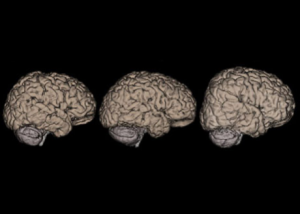Kids with autism are seen to spend more time on screens than neurotypical kids which results in lower physical activity. Screen use may be related to poor academic and development performance, sleep problems, obesity, social behavior deficits, and attention problems. The AAP (American Academy of Pediatrics) advises caregivers to not expose children under the age of 2 years to any electronic device. Kids between the ages of 2 and 5 years old can be exposed to screens for one hour a day before displaying developmental factors described previously. (1)
Watching television at the age of 12 months can increase the chances of developing autistic symptoms at 2 years old. Early exposure can increase a child’s chances of autistic behavior by 2%. However, caregivers can decrease the chances by 8.9% from daily one on one play. (2)
Screens act as a stimulant equivalent to caffeine, amphetamines, or cocaine for children. Autistic kids are more vulnerable to addiction and negative impacts compared to neurotypical kids. Factors that cause the vulnerability include:
-
- Low melatonin and sleep disturbance
- Screen time causes a disturbance in circadian rhythms by suppressing melatonin. Melatonin regulates hormones, the immune system, and inflammation.
- Arousal regulation issues
- Autistic kids experience overstimulation with increased stress response and emotional dysregulation. Screen use can heighten these symptoms.
- Inflammation of the nervous system
- The combination of increased stress suppressed melatonin, and sleep disturbances cause inflammation within the nervous system.
- Decreases healthy frontal lobe development
- Reduces the connection of white matter and gray matter in the frontal lobe. This affects verbal competence, aggression, and cognitive abilities.
- Social and communication deficits
- Autistic kids experience difficulties identifying social cues like reading body language, having low empathy, and having trouble communicating with others. Screen use inhibits the development of these skills. One study found that screen use and background screens can delay language development.
- Prone to anxiety
- Screen use is positively correlated with the risk of developing OCD, social anxiety, high arousal, and diminished coping methods. The amygdala can be seen to change functions when exposed to screens which cause serotonin synthesis abnormalities.
- Sensory and motor integration
- Kids with autism are prone to have tics that can worsen due to dopamine release from watching screens.
- Psychiatric disorders
- Autistic kids are at higher risk of developing ADHD, tics, anxiety, mood disorders, and psychosis. Screen use is seen to increase the display of such disorders. Individuals with psychosis “may experience hallucinations, paranoia, dissociation, and loss of reality-testing” while actively using screens. (3)
- Low melatonin and sleep disturbance
Increased screen time is correlated with melanopsin-expressing neurons and decreasing GABA neurotransmitters which cause autistic-like behavior and decreased cognitive and language development. One study found:
-
- kids who were exposed to screen for less than 3 hours per day had language delays and a short attention span.
- kids who were exposed to screens for more than 3 hours per day had language delay, short attention span, and hyperactivity
- This shows that any duration of screen exposure produces negative effects on children.
The light projected from screens is detected by retinal ganglion cells (RGCs) which signal the thalamic nuclei and visual cortex for image visual function. Melanopsin is used for non-image visual function. It can be found in the suprachiasmatic nucleus (SCN), ventrolateral preoptic area (VLPO), and limbic regions to help balance sleep patterns, cognitive function, and mood.
Neurotransmitter deficiency such as dopamine, acetylcholine, gamma-aminobutyric acid (GABA), and 5-hydroxytryptamine (5-HT) may cause a spectrum of autism. (4)

Neurotypical Brain ~ Brain with Early Onset ~ Autistic Brain
The structure of an autistic brain can be seen to be different compared to a neurotypical brain such as:
-
- An enlarged hippocampus
- They will have a larger amygdala early in life then a smaller amygdala with age compared to a neurotypical brain
- Smaller tissue in the cerebellum
- An enlarged head and brain which will shrink prematurely (before mid-20’s)
- Excess cerebrospinal fluid (5)
Screen use can worsen these factors due to the topics discussed throughout this blog. In conclusion, screen use can heavily negatively impact children with and without autism.
Resources:
- https://www.frontiersin.org/articles/10.3389/fpsyt.2021.619994/full
- https://www.medpagetoday.com/neurology/autism/86051
- https://www.psychologytoday.com/us/blog/mental-wealth/201612/autism-and-screen-time-special-brains-special-risks
- https://www.ncbi.nlm.nih.gov/pmc/articles/PMC5849631/
- https://www.spectrumnews.org/news/brain-structure-changes-in-autism-explained/
